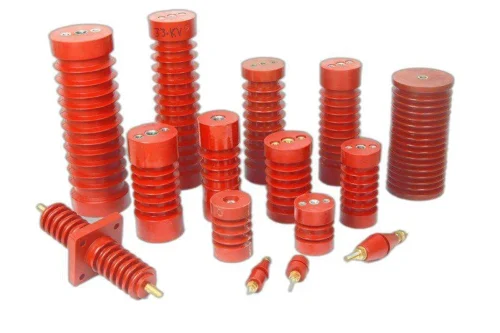How RCOBs Help Safeguard Electrical Systems from Overloads and Faults

Residual Current Operated Breakers (RCOBs), also known as Residual Current Circuit Breakers (RCCBs) or Residual Current Devices (RCDs), play a vital role in maintaining the safety and integrity of electrical systems. They are primarily designed to detect leakage currents, but they also contribute to protecting against overloads and electrical faults that could otherwise cause severe damage to systems, equipment, and even individuals. In this article, we will explore how RCOBs help safeguard electrical systems from overloads and faults, ensuring the reliability and safety of power distribution.
1. Understanding Overloads and Faults in Electrical Systems
Overloads
An overload occurs when the electrical current flowing through a circuit exceeds its designed capacity. This can happen due to:
- Excessive use of electrical appliances on the same circuit.
- Faulty equipment drawing more power than it should.
- Improper wiring or connections that create resistance.
When an overload occurs, the wires or components of the electrical system may heat up, leading to the risk of fire, equipment damage, or even explosions.
Faults
Faults refer to unintended electrical paths that cause abnormal conditions within a system. These can include:
- Short circuits, where a live wire comes into direct contact with a neutral or ground wire.
- Ground faults, which occur when electrical current flows through unintended conductive paths, such as a person’s body or a metal surface.
Faults can cause sudden surges in current that may damage equipment, cause electrical fires, or lead to electrical shock hazards.
2. How RCOBs Protect Against Overloads and Faults
RCOBs primarily detect earth leakage currents (residual currents), but many modern RCOBs come equipped with features that also address overloads and faults. Let’s break down how they help in these areas:
1. Detection of Earth Leakage Currents
One of the primary functions of an RCOB is to detect leakage currents. These are small amounts of current that flow through unintended paths, such as a person coming into contact with an electrical appliance or wiring. Leakage currents often signal a fault condition, such as a damaged appliance or worn-out wiring.
- RCOBs detect leakage imbalances between the live and neutral conductors in a circuit.
- If the RCOB detects an imbalance (i.e., more current flowing through the live wire than the neutral), it trips the circuit, disconnecting the power and preventing further risks of electric shock or fire.
2. Overload Protection
While RCOBs are primarily designed to detect leakage currents, they can also help prevent overloads. Overload protection is typically offered by circuit breakers; however, many RCOBs are now integrated with overload protection features, making them more effective at safeguarding the electrical system.
- RCOBs with integrated overload protection can detect when the current exceeds a safe limit, causing the device to trip and disconnect the circuit before overheating or fire hazards occur.
- Overload conditions typically occur when the current drawn exceeds the capacity of the wiring, potentially damaging electrical equipment or wiring.
By disconnecting the circuit when an overload is detected, RCOBs help avoid equipment damage and fire hazards caused by excessive current.
3. Fault Detection and Rapid Disconnection
RCOBs also play an essential role in detecting electrical faults, such as short circuits and ground faults. These faults can create sudden, high-current surges that can cause severe damage to electrical systems and devices.
- Ground faults occur when a live conductor comes into contact with a grounded object or the earth, leading to an electrical path that could cause electrocution or fire.
- Short circuits happen when the live and neutral wires come into direct contact, leading to a surge in current that can cause fires or equipment damage.
RCOBs detect these sudden imbalances or changes in current and trip the circuit immediately, ensuring the safety of people and electrical equipment. This rapid disconnection limits damage and prevents hazardous conditions from worsening.
4. Coordinated Protection with Other Devices
RCOBs work in tandem with other protective devices, such as fuses, circuit breakers, and surge protectors, to provide comprehensive protection. While RCOBs are focused on leakage and fault currents, devices like circuit breakers are designed to protect against overloads by interrupting the current when it exceeds safe limits.
- Coordinated protection ensures that in the case of an overload, the circuit breaker trips first, and in the event of a leakage or fault, the RCOB trips.
- This layered approach minimizes the risks of electrical accidents and enhances the overall reliability of the electrical system.
3. Benefits of RCOBs in Preventing Overloads and Faults
The integration of RCOBs into electrical systems provides several significant benefits when it comes to overload and fault protection:
1. Enhanced Safety for People
By detecting leakage currents, ground faults, and overloads, RCOBs protect individuals from the risk of electrical shock and fires. In residential settings, this is particularly important in areas such as kitchens, bathrooms, and outdoor outlets, where the likelihood of leakage and ground faults is higher.
2. Prevention of Equipment Damage
Overloads and faults can cause serious damage to electrical devices, appliances, and machinery. RCOBs help safeguard equipment by disconnecting the power when these issues arise, preventing costly repairs or replacements.
3. Compliance with Electrical Standards
RCOBs ensure compliance with national and international electrical safety standards. In many regions, the installation of RCOBs is required by electrical codes to enhance safety and minimize the risk of electrical accidents. For example, the IEC 61008 standard requires RCOBs to be used in installations where safety is critical.
4. Reducing Fire Risks
Overloaded circuits or faults can lead to overheating, sparks, and fires. RCOBs significantly reduce this risk by disconnecting the circuit before dangerous heat buildup occurs, making them essential in preventing electrical fires.
5. Proactive Fault Detection
RCOBs continuously monitor the system for any abnormal current flow, providing proactive protection. This early detection is crucial for preventing faults from escalating into serious issues that could damage the electrical infrastructure or put lives at risk.
4. Conclusion
RCOBs are an essential component of modern electrical protection systems. While they are primarily known for detecting leakage currents and preventing electric shocks, they also play a vital role in safeguarding electrical systems from overloads and faults. By detecting imbalances, overloads, and electrical faults, RCOBs help prevent damage to equipment, reduce fire risks, and ensure the safety of individuals working or living within these environments.
In combination with other protective devices, RCOBs offer comprehensive protection and are indispensable in maintaining the integrity of electrical systems in homes, offices, factories, and industrial installations. Whether protecting against electric shocks, overloads, or faults, RCOBs are a key element in achieving a safe, reliable, and efficient electrical network.





